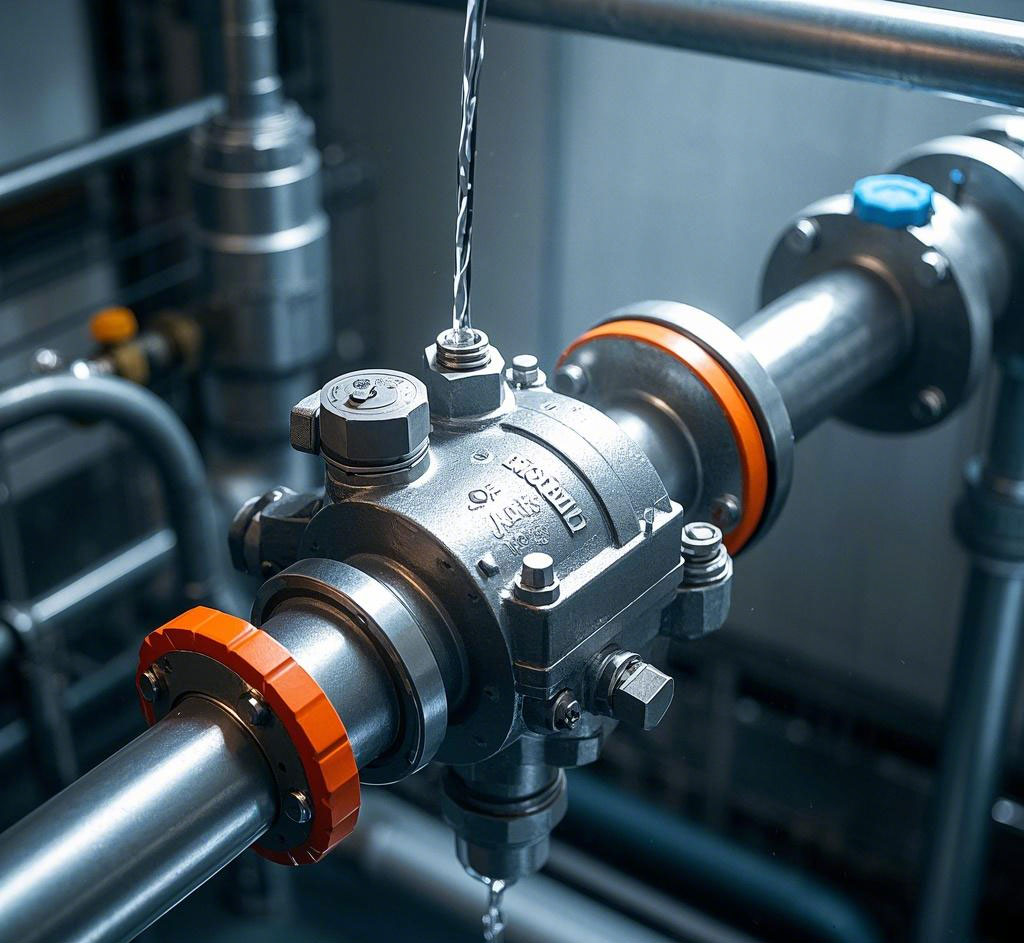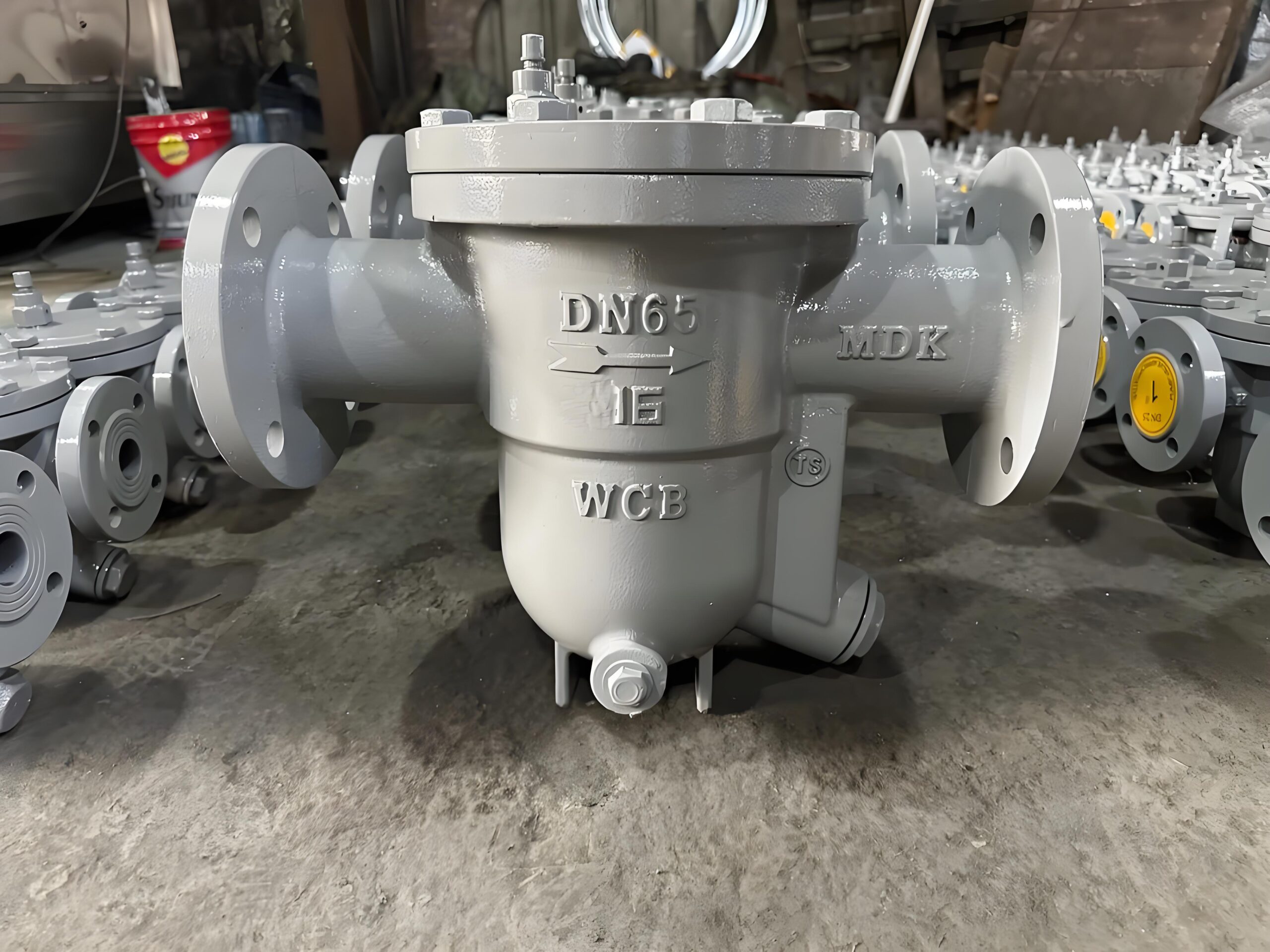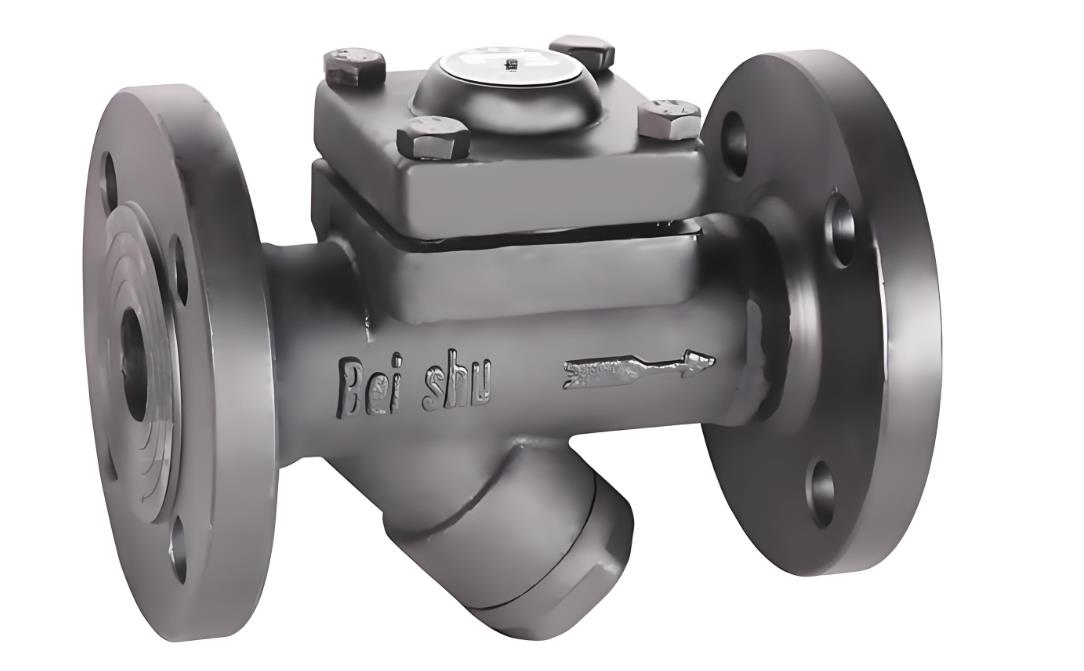Steam traps are cleverly installed between steam heating equipment and condensate recovery piping. When the system begins operation, the bucket structure inside the trap is located at the bottom, when the valve is fully open.
Condensate flowing into the trap from the steam heating equipment first accumulates in the bottom of the bucket and gradually fills the entire valve body, making the bucket completely submerged. This condensate is then smoothly discharged into the recovery piping through the fully open valve.
At the same time, steam enters the trap from the bottom of the drum and rises to the top of the drum. Due to the buoyancy of the steam, the drum slowly rises and is levered closer to the valve seat, eventually closing the valve completely.
During this process, non-condensable gases such as air and carbon dioxide collect at the top of the trap through the small vent holes in the bucket. These gases, as well as the small amount of steam discharged through the vent holes, condense into water as a result of the trap’s heat dissipation.
As new condensate begins to fill the bucket again, the bucket exerts a downward pull on the lever. As the condensate level rises, this pulling force increases until it overcomes the pressure difference between the two sides of the valve, allowing the valve to reopen.
Once the valve begins to open, the differential pressure acting on the valve flap decreases, and the bucket quickly drops as it loses buoyancy to the steam, allowing the valve to fully open again. At this point, the non-condensable gases that have accumulated at the top of the trap will be discharged first, followed by the smooth flow of condensate.
As the condensate flows out, it also drives some dirt out of the trap, keeping the system clean and operating efficiently. Once the condensate has been discharged, the steam begins to enter the trap again and the next cycle begins.
Overall, steam traps are able to efficiently manage condensate and non-condensable gases in the steam system through their unique operating principle, ensuring the proper operation of steam heating equipment and the efficient use of energy.



